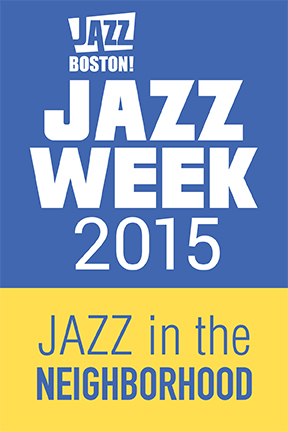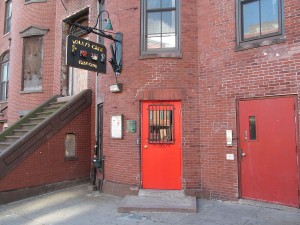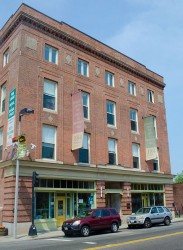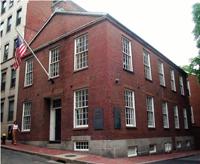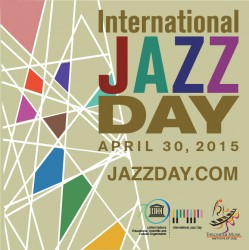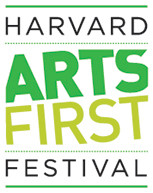Jazz Week 2015: Roxbury Takes Center Stage
Jazz Week 2015 shines a spotlight on the jazz scene—historic and current—in Boston’s core African American community of Roxbury (and adjoining Mattapan and Dorchester).
By J. R. Carroll
Jazz in the Neighborhood is the theme of this year’s Jazz Week, with a special emphasis on Boston’s African American community and a migration that began in colonial times on the north slope of Beacon Hill, shifted to the West End and the South End, and ultimately reached its destination in Roxbury. With the recent opening of the Bruce C. Bolling Municipal Building (named for the late Boston city councillor) in Dudley Square—now the headquarters of the Boston Public Schools and home to the Roxbury Innovation Center—Roxbury is on the upswing, and Jazz Week 2015’s highlighting of this evolving community is timely.
Appropriately, the focus on Roxbury opens with a walking tour of Lower Roxbury that begins on Saturday, April 25, at 11 a.m. at the Ruggles Station of the Orange Line, wends its way down Tremont Street, and then back up Mass. Ave. to the Orange Line station—a path that should be somewhat familiar to attendees of the Berklee Beantown Jazz Festival in recent years. Developed by Discover Roxbury, based on its 2012 oral history project, the “High Notes of Jazz” tour makes stops at the addresses where clubs like Connolly’s Stardust Room (which survived, albeit not as a jazz club, until 1998), the after-hours Pioneer Social Club, Johnny Wilson’s Swanee Grill, the Professional and Business Mens Club, the nationally renowned Hi-Hat, Little Harlem (later Little Dixie and Wally’s Paradise—now Wally’s Cafe, the lone survivor of this era), Eddie’s Cafe (later the Wigwam), the Royal Palms (later the relocated Savoy Cafe, where the young Malcolm X—and the young Nat Hentoff—often hung out), and other celebrated jazz venues of the thirties, forties, and fifties made this neighborhood the most vibrant jazz scene in Boston. (For much more detail on these clubs and Boston’s jazz scene in this era, dig into Richard Vacca’s essential The Boston Jazz Chronicles, reviewed by the Arts Fuse in November 2012.)
OK, hold on a moment. You may be asking yourself, doesn’t the path of this tour actually lie in the South End? Well, congratulations–you’ve just wandered into the midst of a longstanding and sometimes contentious debate about what defines the borders of Roxbury. While there seems to be general agreement that the area southwest of Melnea Cass Boulevard is part of Roxbury and the area northeast of Mass. Ave. is part of the South End, the region in between has been claimed by both communities. What is indisputable is that, for much of the first half of the 20th century, this area was the heart of Boston’s African American community.
What is also indisputable is that this is no longer the case. When a new wave of jazz clubs began to appear in the 1970s, they shifted toward and across the Charles River and beyond into the suburbs. While Darryl’s Corner Bar & Kitchen and Slade’s Bar & Grill do offer several nights of live jazz (broadly defined), Wally’s (bless ’em!) is the lone venue in this neighborhood that still features live music (including nightly jam sessions) seven days a week.
If the “High Notes of Jazz” walk traces a historic path, other events during Jazz Week collectively represent a tour of some of the important jazz venues in today’s Roxbury, Mattapan, and portions of Dorchester. One venue that has emerged in this new century is the revitalized Hibernian Hall, a one-time Irish social club that was renovated and reopened in 2005 and has become an important cultural component of the reviving Dudley Square neighborhood. As the keynote event of the kickoff weekend for Jazz Week 2015, on April 25, at 8 p.m., Hibernian Hall will host a Saturday Night Gala Dance Party, described as “a 21st century take on the big band dance galas of the 30s and 40s in a ballroom setting [featuring] swing tunes, calypsos, and ballads.” (JazzBoston and the Madison Park Development Corporation are co-hosting the gala.)
Especially interesting is the fact that music will be supplied by the Roxbury-based Makanda Project (joined by dancers Mickey Davidson and Dexter Jones). The late reedman Makanda Ken McIntyre grew up in Roxbury, and the Project that bears his name, led by pianist John Kordalewski, calls Roxbury home and performs several times a year at the Boston Public Library’s Dudley Branch—itself a significant cultural center for Roxbury. The ensemble normally focuses on the body of compositions that Makanda created, so this dance party represents something of a departure in terms of both repertoire and venue.
As mentioned earlier, the journey that brought Boston’s African Americans to Roxbury (and Mattapan) was long—much longer than many might imagine. More than two centuries old, the African Meeting House on the north slope of Beacon Hill was a gathering place for Boston’s free black community in the 19th century; in 1987 it was restored, along with the adjoining Abiel Smith School, and this combined Museum of African American History has become a focal point for educational and cultural programs honoring this rich tradition.
At the museum on Sunday, April 26, at 4 p.m., this journey will be recalled and celebrated by Bill Banfield’s Imagine Orchestra, with narration by jazz radio host Eric Jackson and museum storytellers. The program will move through time from the free black community of the colonial era to celebrated jazz musicians of the 20th and 21st centuries who have called and continue to call Roxbury home.
Sunday, April 26 (and pretty much every Sunday) provides an opportunity to get to know another jazz venue that has emerged just beyond the other end of Roxbury (actually, pretty much on the Mattapan/Dorchester line), the Ramsay/Toy VFW Post #8872 on Woodrow Ave. Now in its seventh year, the weekly 7:30 p.m. residency of saxophonist Kurtis Rivers and his quintet at this unprepossessing but friendly venue has been a welcome—and reliably regular—addition to the Roxbury/Mattapan/Dorchester jazz scene.
Mattapan lies on the other side of Franklin Park from Roxbury, but, like the latter, is a significant locus of African American life in Boston (including a substantial population of Haitian Americans). On Saturday, May 2, starting at 1 p.m., the William E. Carter American Legion Post—the oldest African American veterans post in the country—will host “Mattapan speaks jazz,” an afternoon of musical performances by artists including Mélanj and pianist Frank Wilkins and WeJazzUp.
Noteworthy in all of the above is the fact that these performances take place in what you might call alternative music venues: historic buildings, schools, public libraries, American Legion and VFW posts, etc. The absence of music clubs and restaurants is striking, but perhaps in the coming years, as Roxbury, Mattapan, and Dorchester tread the fine line between community revival and disruptive gentrification, these more traditional venues will emerge and restore a flourishing jazz scene to Boston’s African American communities.
There is much more to Jazz Week 2015, of course—consult the schedule for more information. Besides the performances in the expected venues, there are several special events worth highlighting.
The last day of April is traditionally International Jazz Day; this year’s all-star concert takes place in Paris and will be streamed live at 1 p.m. Boston time. As a warm-up to this event, Boston City Hall will host for the second time an International Jazz Day Preview at 11 a.m. on Wednesday, April 29, this year with New Orleans-inspired performances by saxophonist Ken Field and his Revolutionary Snake Ensemble Quartet with guest saxophonist/vocalist Stan Strickland.
Harvard’s annual ARTS FIRST festival will present “Jazz on the Plaza” on Friday, May 1, at 5:30 p.m. The Harvard Jazz Band will be led by a Harvard alum, saxophonist Don Braden, and will feature guest appearances by this academic year’s artist in residence, pianist Vijay Iyer, as well as drummer/trumpeter Ralph Peterson Jr.
Finally, Jazz Week 2015 brings us back to Wally’s on Sunday, May 3, at 3 p.m. for the annual Jazz Journalists Association Boston Jazz Hero celebration, this year honoring trumpeter, composer, and educator Mark Sumner Harvey, a key figure in the revival of Boston jazz in the 1970s as founder of the Jazz Coalition and the still very active Aardvark Jazz Orchestra—as well as an ordained minister. The award will be presented by the Arts Fuse‘s own Steve Elman, and the John Funkhouser Trio will provide the live music. (Musicians are welcome to stick around for Wally’s regular Sunday jam session.)

